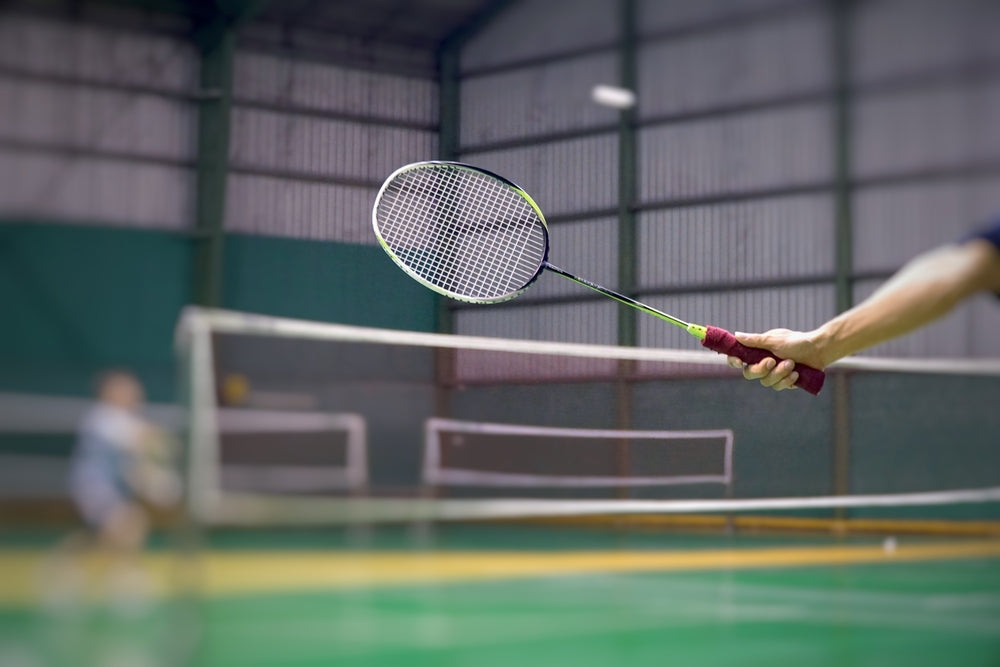The racquet is the most important piece of equipment for the badminton player, it is the extension and the most valuable tool. It goes without saying that choosing the right racquet that complements a player's game is essential. A good racquet that suits a player's style of play can greatly improve power, hitting speed, or control. To find the perfect frame, there are four main things to look for in a racquet: shaft flexibility, racquet weight, swing and handle size.
The flexibility of the shaft
In badminton, the method of generating power is to bend the shaft of the racquet and create a whip effect with a quick rotation of the forearm. Flexibility therefore plays a big role in generating power when hitting, but it also helps determine the control level of a racquet. There are 4 categories of shaft flexibility: flexible, medium, rigid and extra rigid.
The flexible shaft is the easiest to bend and requires less force and less hitting speed. It is often recommended for beginners, very recreational players and players lacking power due to age or injury. A flexible shaft is also more comfortable, as it does not require as much stress on the arm to bend it. It is not recommended for advanced players, as they can generate a shot much faster, and the shaft will not have time to snap back into place after being bent, thus destroying the spin, and losing power.
The medium shaft is a little stiffer than the flex shaft, so it is harder to bend, but provides a little more power and control. It is generally recommended for intermediate players, club players and advanced women looking to gain a little more easy power.
The rigid shaft is the most common among high-end frames, as it offers excellent power to players experienced enough to bend it as well as precision and increased control. The stem also returns faster, creating a more powerful whip effect. It is not recommended for beginners or intermediate players, as it makes simple actions, such as clearing the backcourt, more difficult and much less forgivable, as the player's technique must always be at a level.
Finally, the extra stiff shaft is the most difficult to bend, it requires impeccable technique, but it rewards all capable players with unmatched power. It is recommended for expert players who are looking for a little more power and a more solid feel, but are willing to sacrifice the versatility of a hard shaft.
Racquet Weight
The second important aspect of a badminton frame is its weight. Weight affects virtually every aspect of the game, influencing a racquet's speed, power, stability, maneuverability, feel and difficulty of use. At the major racquet manufacturers (Yonex and Victor), the weight is given by a letter, U, preceded by a number. The higher the number, the lighter the racquet. Here is a table for the most common weights.
|
Racquet weight |
Weight in grams (unstrung) |
|
1U |
95-99g |
|
2U |
90-94g |
|
3U |
85-89g |
|
4U |
80-84g |
|
5U |
75-79g |
|
6U (ou F) |
70-74g |
A lightweight racquet is obviously faster, more maneuverable and easier to use, but it is less powerful and less stable. The weight of a racquet is a personal choice, but it is generally recommended to choose 4U racquets for less advanced players and those looking for more speed, such as doubles players. The 3U is recommended for experienced players looking for more stability and power at the cost of maneuverability.
Racquet Swing
The swing is the distribution of weight in the racquet. It indicates the exact point in the racquet where it is balanced, and is measured in millimeters. It changes depending on the weight added to a racquet, such as a string or an overgrip. For this reason, most manufacturers do not indicate the swing in millimeters, but prefer to classify rackets into three categories: Head Heavy, Head Light and Even.
A Head Heavy swing indicates that a racquet has a large part of its weight in the head. A frame with more weight in the head is more powerful on all shots over the head, as the swing amplifies the hammer effect, allowing for more power to be applied with the same amount of force, and adds more stability to the racquet. It is often prioritized by aggressive players looking for more power.
A Head Light swing indicates that much of the weight is located near the shaft. A frame with more point in the head is faster and more maneuverable, especially on mid-range shots, such as drives or pushes. It is often prioritized by defensive players or players with very fast hands.
An Even swing is the middle ground between Head Heavy and Head Light. It is a versatile swing that does not compromise on speed or power, but does not excel in either aspect. It is often used by players looking for good versatility and excellent control.
Grip Size
Grip size is the last of the 4 important aspects of a racquet. A properly sized handle allows for better use of our fingers to generate power, and is more comfortable. Grip sizes are given by a letter, G, followed by a number. As with weight, the larger the number, the smaller the handle.
|
Grip size |
Size in mm |
|
G3 |
95mm |
|
G4 |
89mm |
|
G5 |
83mm |
The size of the handle can be adjusted with overgrips or foam padding.
Conclusion
This is an overview of how to choose the right badminton racquet. This is not a complete list of all the different aspects that affect the play of a certain racquet. Indeed, aspects such as racquet feel, frame size, head size, string pattern, materials, shaft size can all influence the playing quality of a frame. But they are very specific to each racquet. We therefore recommend that you ask our specialists if you have further questions about a specific racquet.

